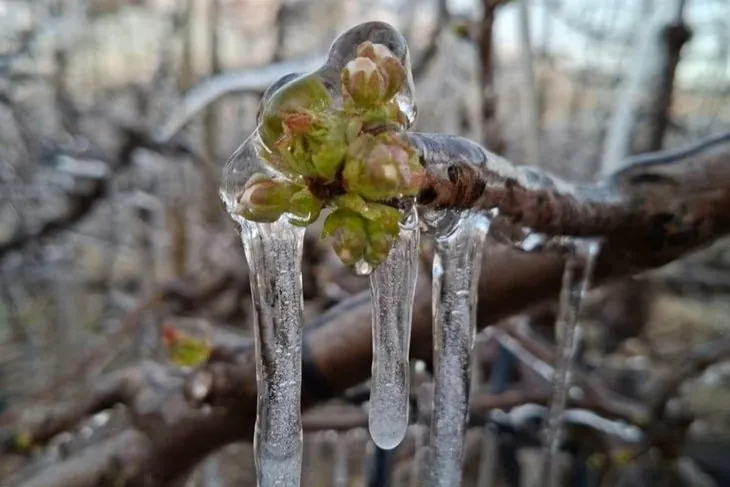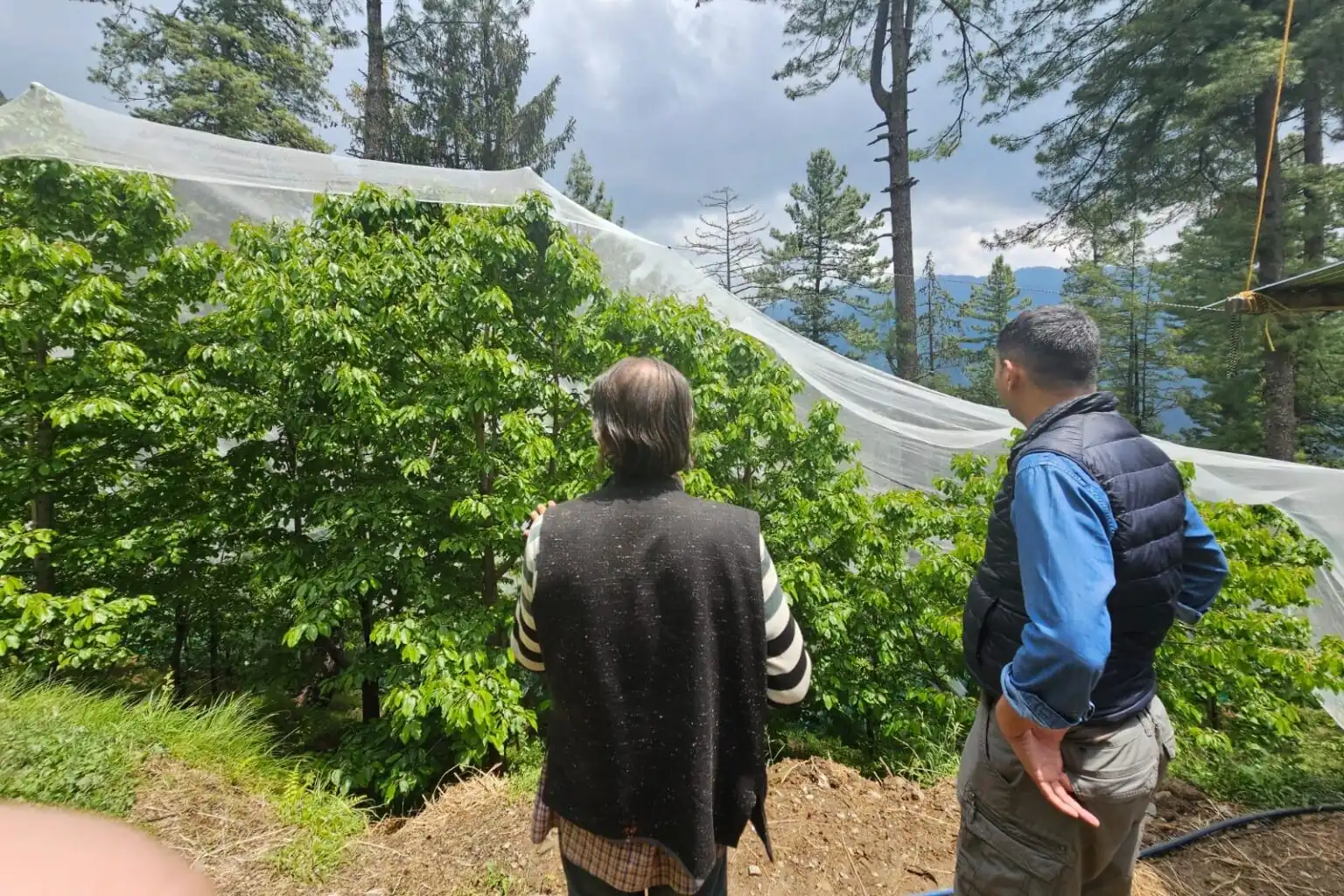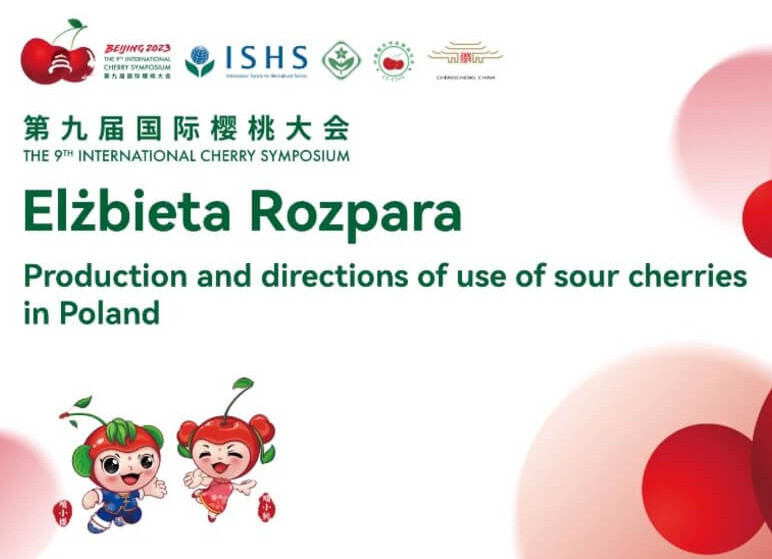Cherry producers confirmed that frosts as low as -9 degrees did not damage the orchards thanks to the “igloo effect”, which protects flowers and buds.
The low temperatures recorded in the last 48 hours in the Patagonian region raised alarms in the fruit sector. However, the Chamber of Integrated Cherry Producers (CACPCI) sent a reassuring message: although intense and prolonged, the frosts did not damage the orchards thanks to the active defense systems adopted by local farms.
In an interview with this outlet, CACPCI’s general manager, Aníbal Caminiti, explained that extreme temperatures did not catch producers off guard, as they are part of the expected scenario for this time of year. “We had a very mild August in terms of climate. The first days of September also went well, until the last nights. In Valle Medio, where the most significant drops are recorded, temperatures ranged between -7 and -9 degrees,” he said.
Caminiti reported that, in some cases, the frost protection systems remained active for more than 10 hours, from 10 p.m. until the following morning. “They were prolonged frosts, but within the norm and predictable. This is the rule of the game in cherry production in Patagonia, nothing new under the sun,” he emphasized.
Phenological development and risks
The director highlighted that, although such events are more frequent in August, this year the month turned out to be unusually warm. This anomaly accelerated the phenological development of the earliest varieties in Valle Medio, which reached advanced flowering stages earlier than usual. “This forced us to strengthen defenses, because flowers at that stage are more sensitive, but we still managed to control the situation,” he added.

The key: sprinkler irrigation
The main tool used by producers to protect orchards is sprinkler irrigation, a system that covers flowers and buds with a thin layer of ice that acts as an insulator. “When ice forms on the plant organ, an igloo effect is created: the temperature around the flower or bud remains at 0 degrees, preventing damage even with -9 degrees outside,” explained Caminiti.
This method requires powerful equipment and careful planning. Not only is the capacity of the sprinklers crucial, but also the availability of water to sustain the flow for several hours. “In Chimpay, in other years, the systems have operated until noon. This is why having storage reservoirs or direct access to canals and rivers is essential,” he added.
According to the CACPCI director, three factors are crucial in frost defense: the extreme temperature reached, the duration of the event, and the availability of water to keep the system running. “Orchards must be prepared for extreme scenarios, even those that occur only once every ten years. This week we had drops down to -9 degrees and everything worked perfectly because the farms were ready,” he observed.
He also specified that it is not only the temperature that matters, but also wind conditions. “When there is a breeze, it is not advisable to turn off the systems as soon as temperatures rise above 0 degrees, but to wait until the air reaches at least 4 degrees to avoid risks,” he clarified.
An indispensable investment
Active frost protection is an indispensable condition for producing cherries in Patagonia. “Today we can confirm that there is no damage to the orchards, but those without such a system cannot produce. It is a sine qua non condition,” Caminiti reiterated.
Implementing a sprinkler irrigation system represents a significant investment: the installation of pipes and sprinklers alone costs between 5,000 and 10,000 dollars (about 4,650 to 9,300 euros) per hectare, to which must be added the cost of reservoirs or infrastructure necessary to guarantee water supply. “It is a significant commitment, but it is what allows us to maintain cherry production in a region where frosts are inevitable,” he pointed out.
Looking ahead, the director of the Chamber explained that it will be necessary to closely monitor climate evolution. “These cold waves block phenological development. Now we must observe how the process will resume. Last year the season was brought forward due to rising temperatures in September. This year, instead, we had a warm August followed by an early September with intense cold, a more atypical scenario,” he said.
Nevertheless, he stressed that producers are ready for different scenarios and have the experience and technology to deal with emergencies. “The companies producing cherries in Patagonia have all the necessary infrastructure to withstand these situations. What happened in recent days is clear proof: with good defense systems, frosts of up to -9 or -10 degrees can be overcome without damage,” he assured.
A reassuring message
The message from CACPCI is clear: despite the extent of the phenomenon, cherry production has not been compromised. “Today we can convey peace of mind: there is no damage to the orchards and the defense systems worked perfectly. The challenge remains to always be prepared, because frosts are part of the reality of this crop in the region,” Caminiti concluded.
Source text and image: masp-lmneuquen-com.cdn
Cherry Times - All rights reserved













